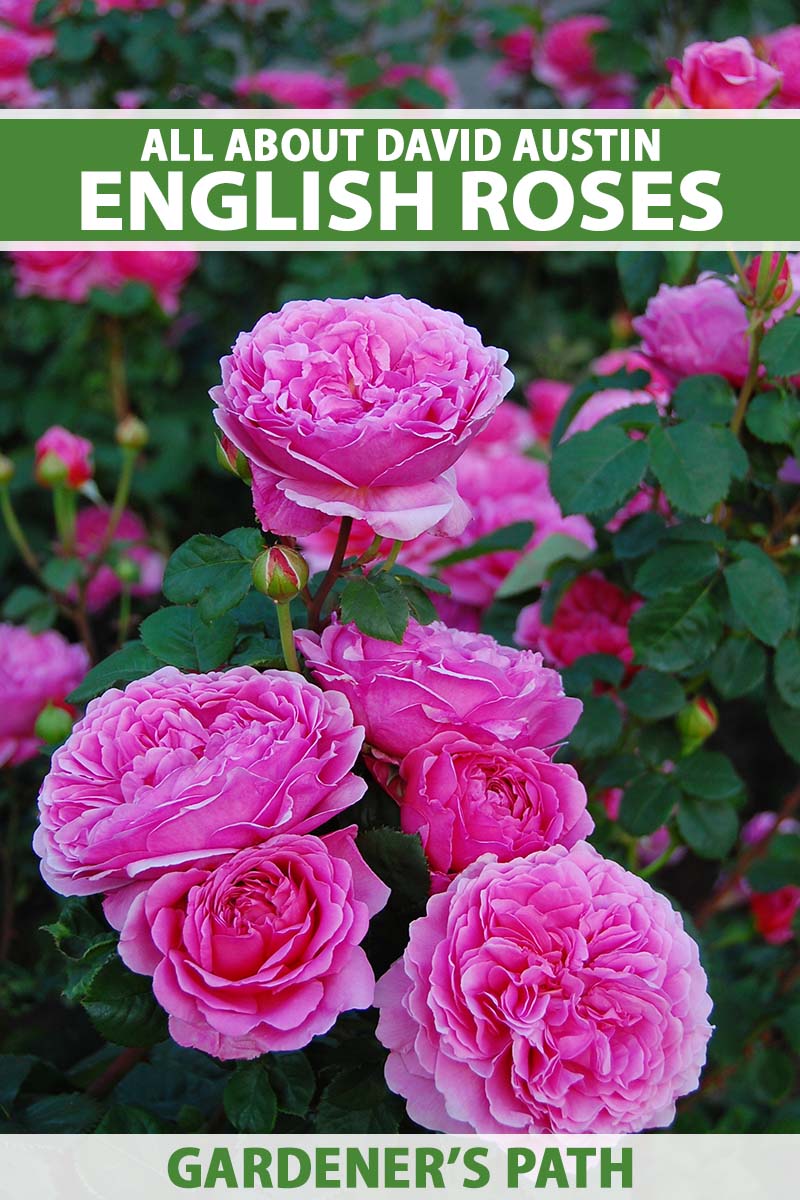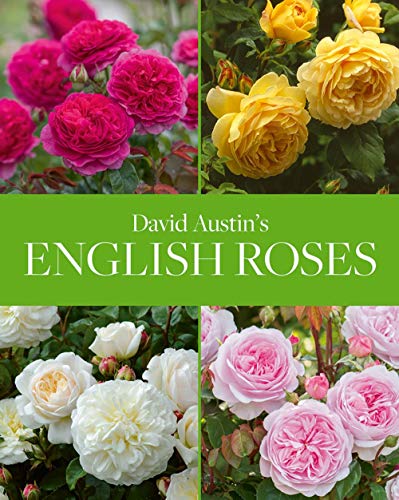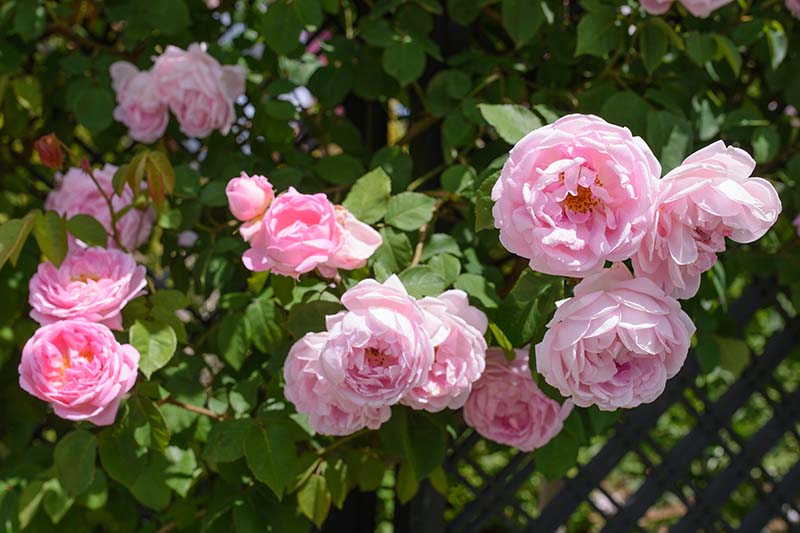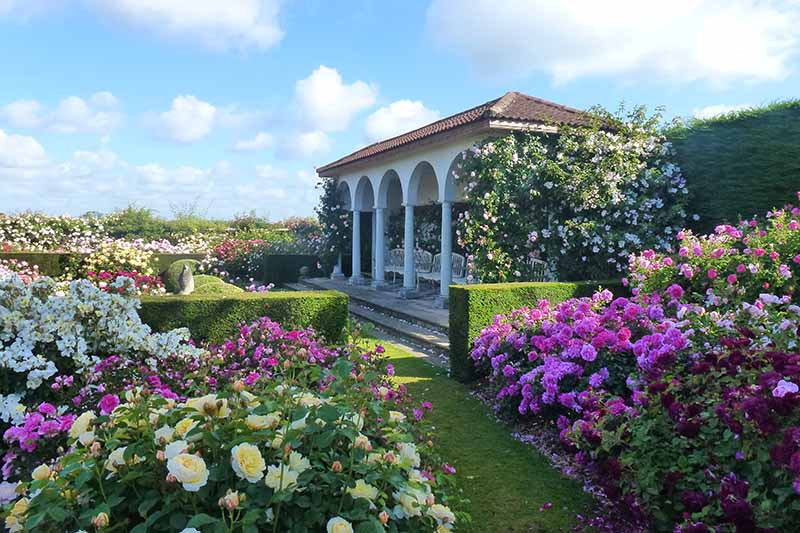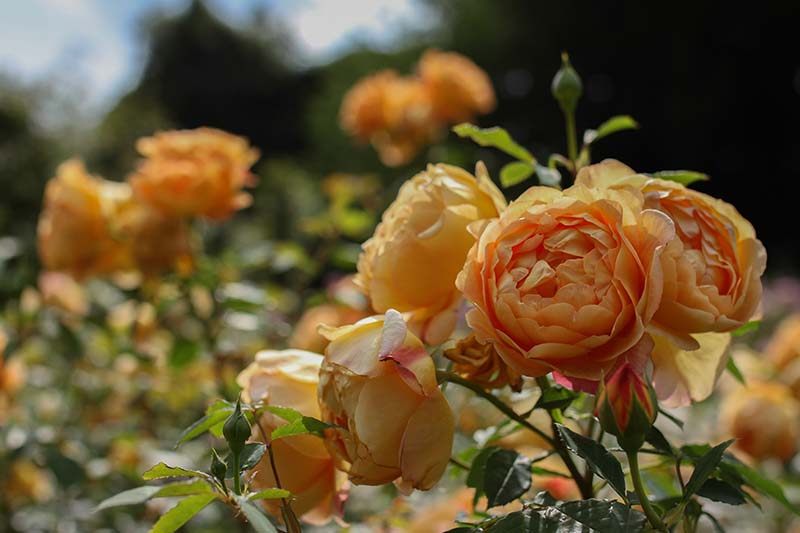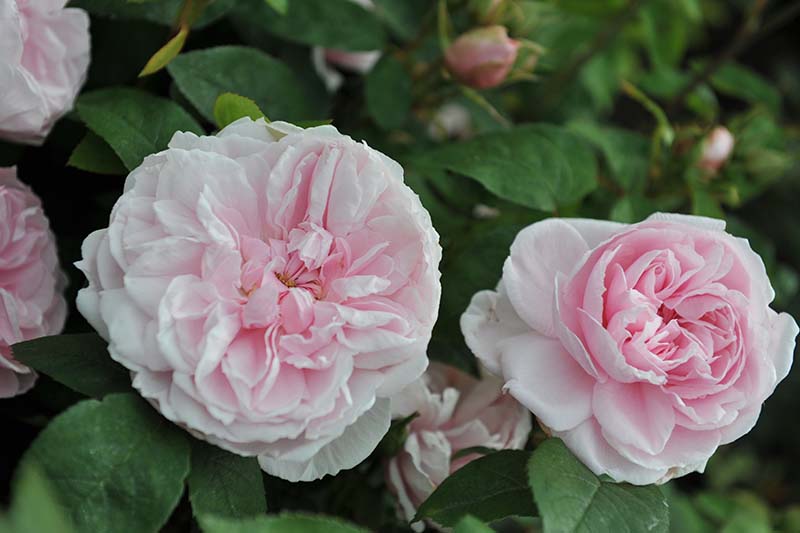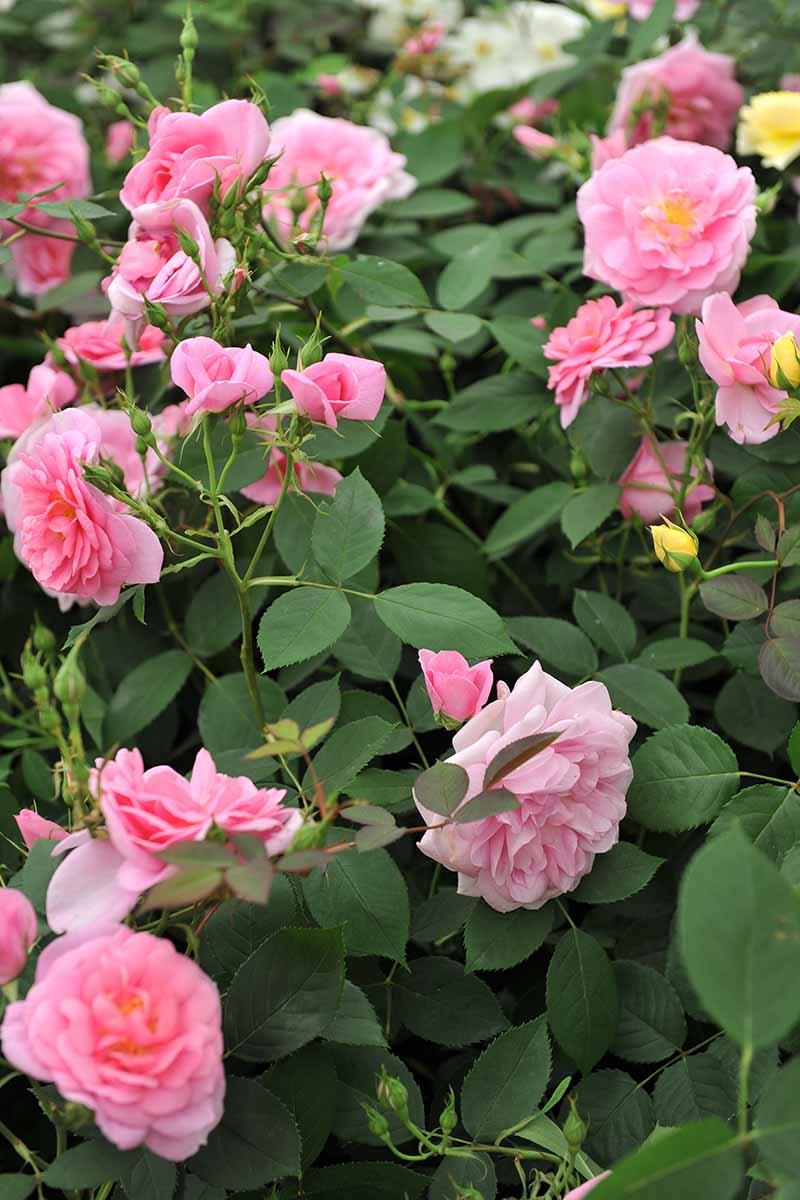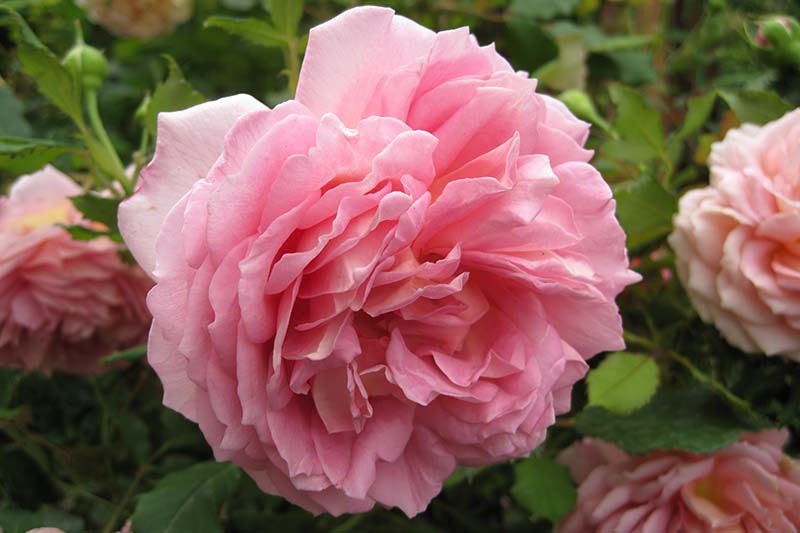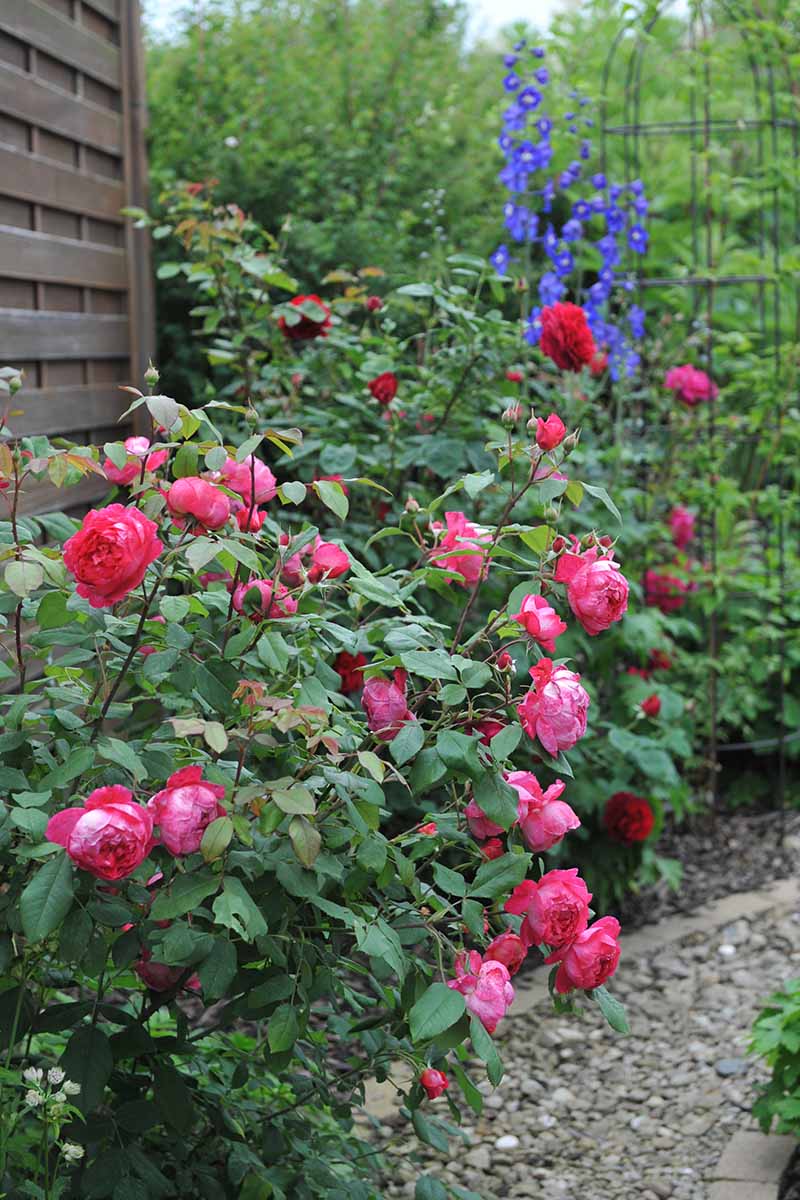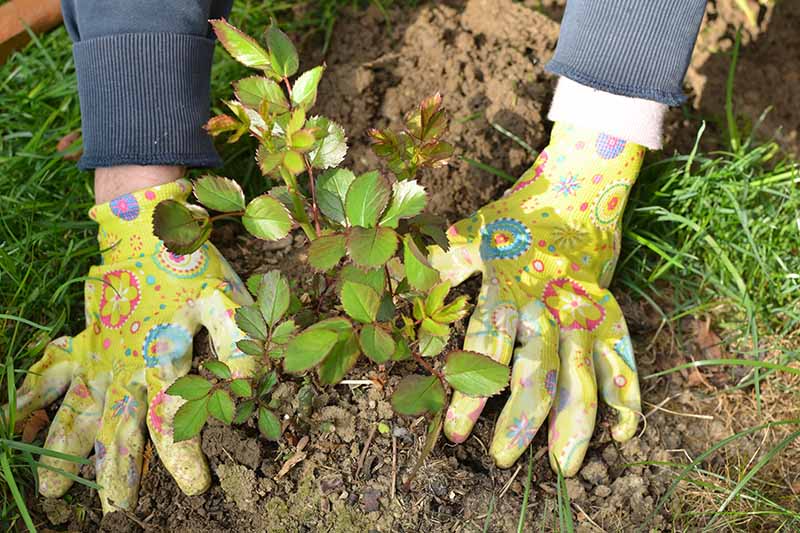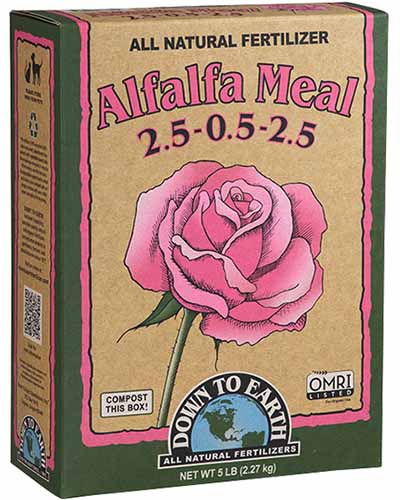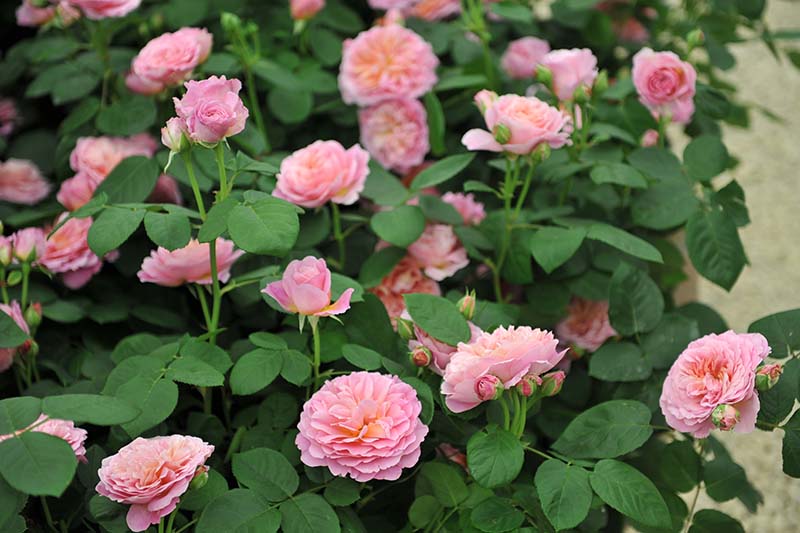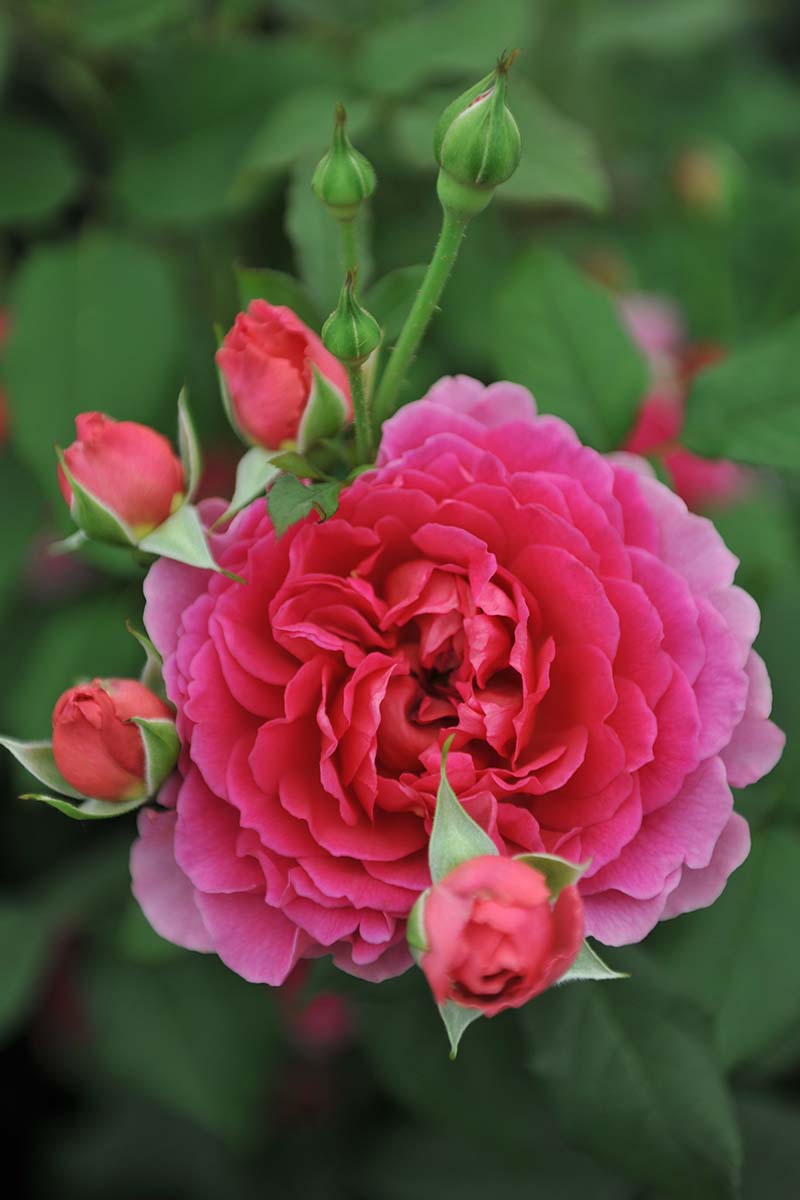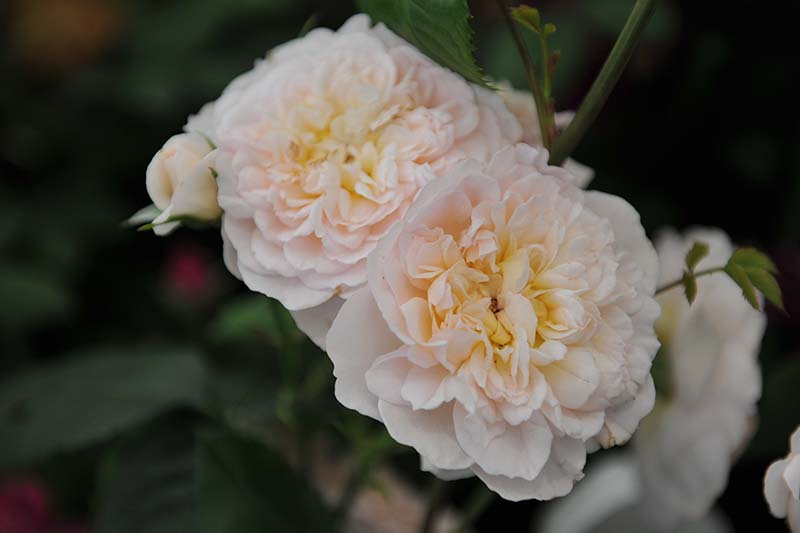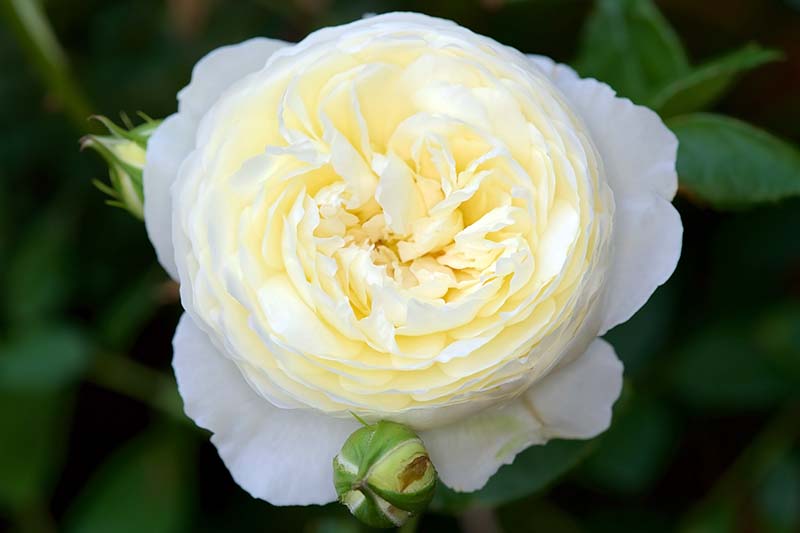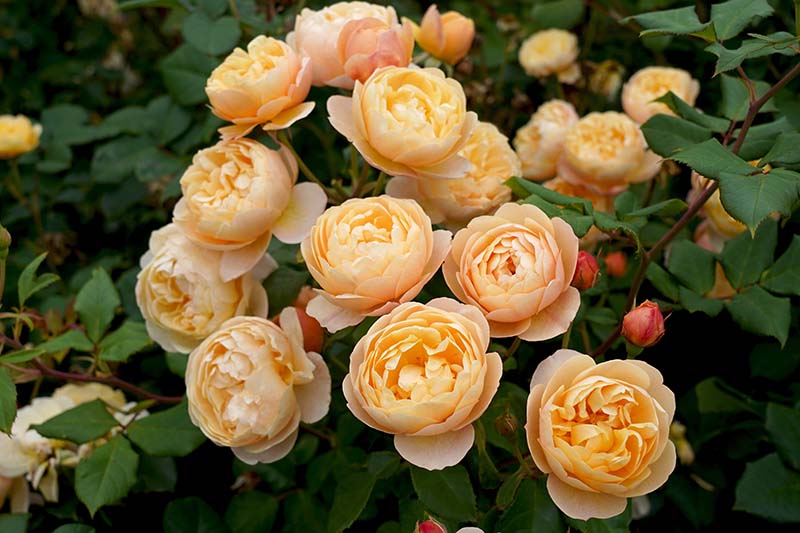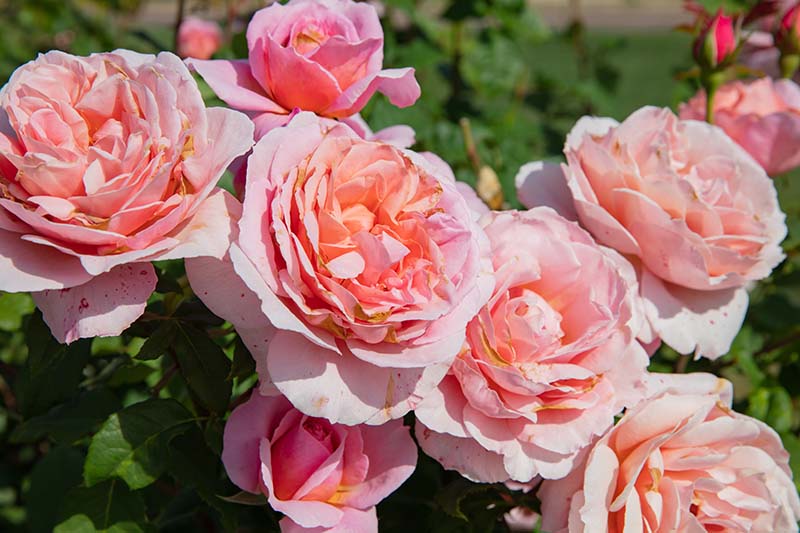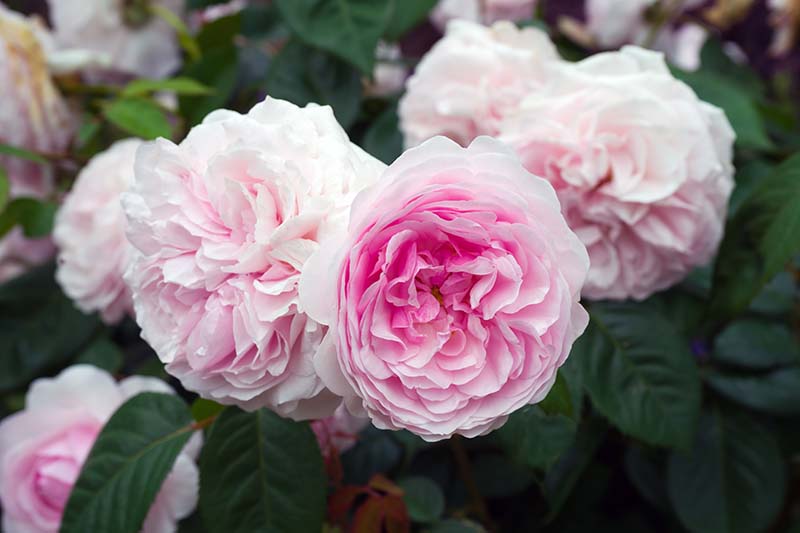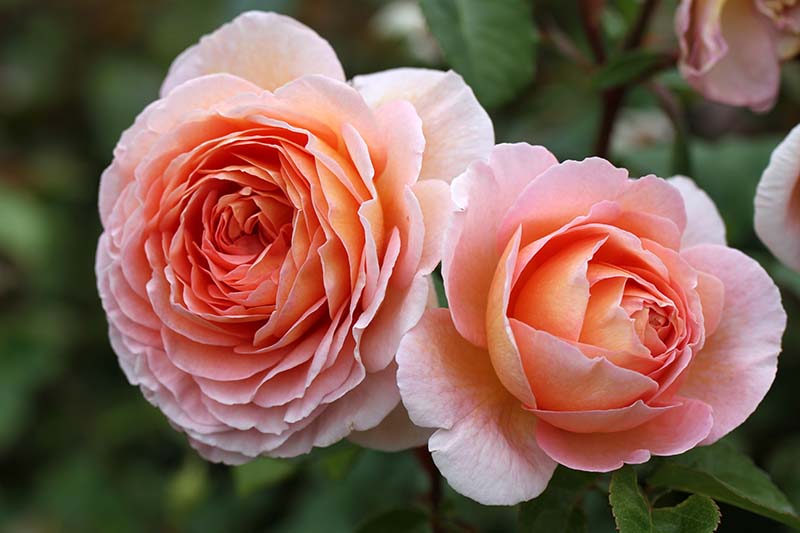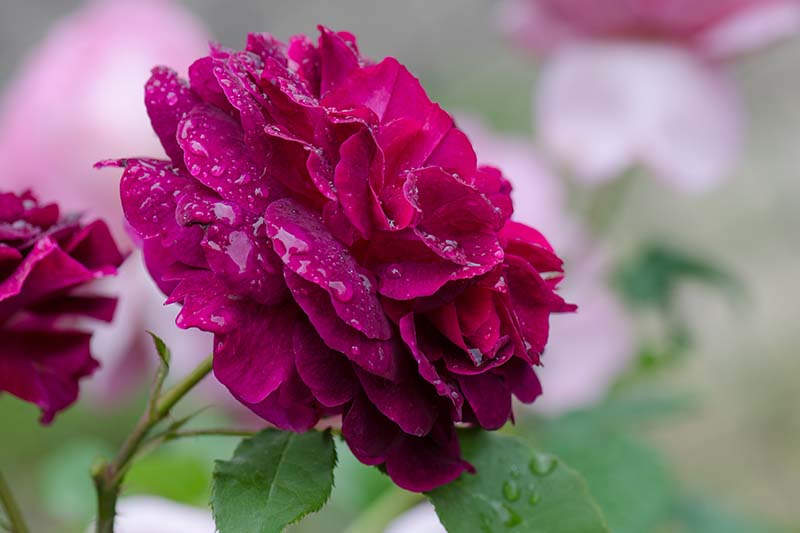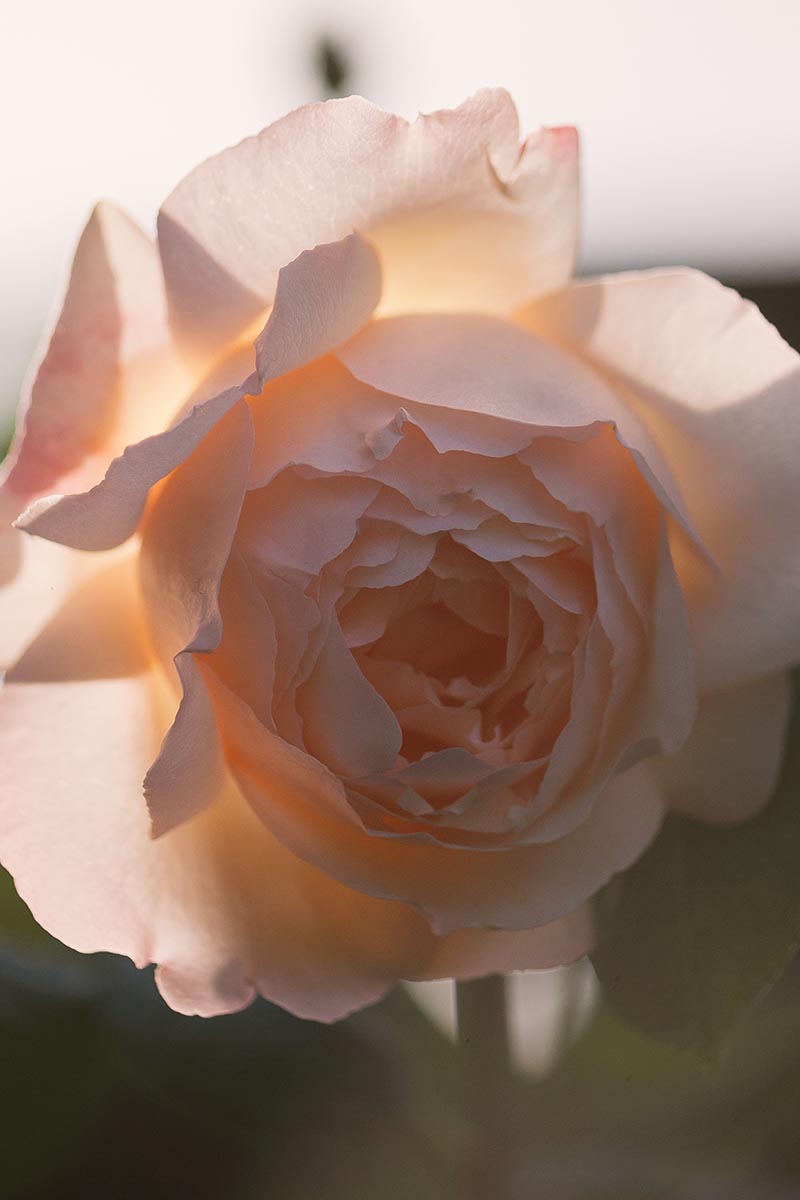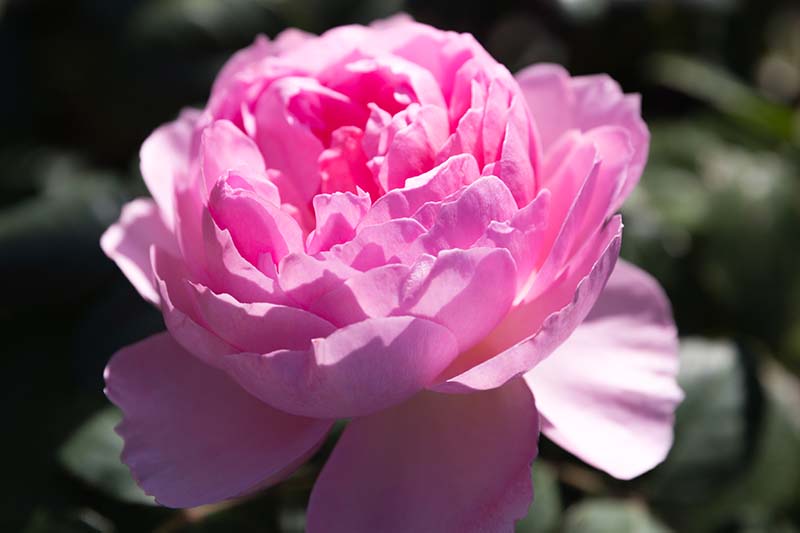We’re talking about the classically beautiful bushes that you can spot just about everywhere, from award-winning gardens to your neighbor’s yard. Also called Austin, English, or David Austin roses, these ravishing flowers are hybrids bred by David Austin, using old garden and modern shrubs to create new plants with the best characteristics of both. We link to vendors to help you find relevant products. If you buy from one of our links, we may earn a commission. Some are climbers or ground covers, but most are mid-sized bushes. Itching to know more? By the end of this article, you’ll be an expert! Here’s what we’ll talk about: These shrubs are incredibly popular, and there are lots of good reasons for that. Let’s jump right in! David Austin was attempting to create what he called a “new old rose” by capturing the elegance, fragrance, and beauty of old world plants and combining that with the color range, disease resistance, and repeat flowering of modern types. David Austin’s English Roses Before I go any further, if some of these terms are throwing you, you might want to check out our guide to rose classifications. It will explain what we mean by gallica, floribunda, and the like. Okay, so where were we? In naming his cultivars, Austin took inspiration from literature, music, and places he found particularly beautiful, rather than giving them descriptive names. It’s hard to even imagine – given their wild popularity today – but initially, no one wanted to buy his hybrids because they seemed too “old-fashioned,” according to an article published in The Guardian. Eventually, they caught on. One of his first successes was ‘Constance Spry,’ a cross of the floribunda ‘Dainty Maid’ and the gallica ‘Belle Isis.’ The result is a bloom that is intensely fragrant with a distinct sweet myrrh scent. The massive, deeply cupped, double blossoms are a vibrant medium pink. This cultivar, named after a British author who made the floral arrangements for the coronation of Queen Elizabeth II, remains popular today and it has been used to make many crosses that carry the myrrh fragrance, a scent that was extremely rare in roses prior to Austin’s efforts. He then went on to try to bring the dark crimson only seen in modern bushes together with the shape and fragrance of old world plants. Out emerged ‘Chianti,’ which has been the basis of many of Austin’s deep red flowers since. As the years went on, Austin added varieties of Bourbon, Portland, alba, R. wichurana, and descendants of R. rugosa into the mix. He added these with the goal of creating more robust plants with a better scent and more striking flowers, without compromising hardiness or shape. If you’ve ever gone to the nursery to shop for roses, then you probably already know he succeeded in his goals. There are so many David Austin options to choose from! Based in Albrighton, in Shropshire, England, Austin continued his work until his death in 2018. He left behind a legacy of flowers that are not only favorites in the garden, but are valued among rosarians. In fact, the most expensive rose ever introduced was developed by Austin. He said it cost $3 million and took 15 years to breed ‘Juliet.’ The peach-colored beauty debuted at the Chelsea Flower Show in 2007. Now, I’ll give credit where credit is due. While Austin coined the term “English rose,” he wasn’t the first to breed new types with old garden rose characteristics. He was just the most successful. Well-known breeders like Eugene Boerner, Herbert Swim, Philipp Gudeldig, Kordes, and De Ruiter Innovations also created English-style roses before Austin introduced his and trademarked the term.
English Rose Types
All Rosa species across the world are categorized by the American Rose Society (ARS), which is the organization in charge of registering new plants. When Austin registered his plants with the ARS, he put them in what is called the shrub category. Austin is credited with making the shrub category, formerly an insignificant group, into the wildly popular category that it is today. While English roses aren’t the only plants in the shrub category, they are certainly one of the most popular. If you want to learn more about the plants that make up this classification (which has nothing to do with growth habit), check out our comprehensive guide. That said, Austin liked to group his creations into his own sub-categories as well. While these aren’t officially recognized by the ARS, they do give us some idea of how to understand the different types that he created. Let’s take a look.
Old Rose Hybrids
To begin, this category includes Austin’s first attempts at creating “new old roses.” These tend to have smaller flowers and a smaller range of colors than his other plants. You’ll see pink, crimson, and purple blossoms. They are all fragrant and flower repeatedly throughout the season.
Leanders
This group builds on his original old rose hybrids, using R. wichurana and other modern types to create new hybrid crosses. These tend to have large flowers in a wide range of colors, including yellow, apricot, and flame red. They are highly scented, with less common scents such as raspberry, lemon, and apple. Leanders are named for the protagonist of the poem Hero and Leander by Christopher Marlowe.
English Musks
Don’t confuse this group with the hybrid musk or musk (R. moschata) types. English musks were bred by crossing Austin’s old rose hybrids with noisettes, which are hybrids that originated in the US in the early 1800s. Noisettes have a shrub-like growth habit and large clusters of medium-sized flowers. Thanks to their genealogy, this group has more dainty flowers and growth than the previous two groups. They tend to have clusters of pastel-colored flowers in pink, yellow, apricot, peach, and blush. What’s lacking for these is the scent. Most in this group aren’t highly fragrant. They are, however, repeat bloomers.
English Alba Hybrids
This is the newest group. Austin described all of them as having a more “wild” growth habit, meaning they tend to be less compact and upright. Most are crosses between albas and his English types, and almost all are pink. While the flowers are quite petite, they are incredibly pretty, with tons of petals.
Some Other English Roses
No, I’m not taking creative liberty with this group naming. That’s what Austin dubbed all the other English roses that he bred that don’t fit into one of the categories described above (and he often just called them “shrubs,” for short). As you’d expect, this is a varied and hard-to-pin-down group. This is where you’ll find most of the climbing and ground cover types.
Care and Growing Tips
If you were to ask Austin himself, he’d tell you that all his shrubs need is a little compost worked into the soil before planting, regular pruning to cut plants back by a third, and that’s it. But if you want to put in some more effort, plants will produce bigger blossoms, and more of them. I’d say that’s mostly true (if a little optimistic), but here are some additional tips if you want to make the most of your flowers: East, west, and south-facing spots are perfectly fine for planting. Austin claimed north-facing areas are also adequate, as long as there isn’t additional shade in the area from trees or buildings. I’ve found that unless these plants receive at least five hours of sun, the amount of flowering is reduced significantly, and the risk of disease is higher. Morning sun is ideal. Plant away from trees, since roses don’t like to compete with other plants at the root level. Since these are all grafted plants, be sure to position the graft union about two inches below the soil in USDA Hardiness Zones 7 and lower. It should be positioned just above the soil line in Zones 8 and up. Austin believed English roses should be grown in groupings. While a single isolated specimen can look unsubstantial, two or three placed together make a striking statement. After your plants are in the ground, prune them back by a third in the late winter before new growth starts. Take out any crossing or rubbing canes at this time, as well. During the growing season, deadhead if desired, and remove any dead or diseased canes when you see them. Trim away any suckers that emerge from the soil, as well. While some people recommend pruning roses at an angle or near a leaf bud, Austin said it makes no difference with his plants. Keep on top of removing any suckers that emerge from below the graft union (anything above the union is fine to leave in place). You can trim the suckers at the soil level, or you may prefer to deal with these according to Austin’s recommendation, digging down to the spot where the sucker emerges from the rootstock, and pulling it off so that a little of the root bark comes with it. Keep the soil around your shrubs well weeded, and prick the soil with a fork to a depth of two inches every few months to loosen and aerate the earth. Place about an inch of well-rotted compost mulch around the plants to help retain moisture, and replace it as needed. Because they blossom regularly throughout the growing season, plants need a steady amount of water. Once the top inch of soil has dried out, give them a deep soak. They also need regular feeding, but not too much, as over fertilizing can encourage disease. Austin stresses that you should only use organic fertilizers, but whether you choose an extended-release product or not is a matter of preference. Personally, I love Down to Earth’s Alfalfa Meal because it has the right balance for rose bushes. Apply it in the spring and fall according to the manufacturer’s recommendations. Down to Earth Alfalfa Meal If you need to stock up on alfalfa meal, our friends at Arbico Organics carry half-pound and five-pound boxes (and the boxes are compostable!). While lifespans can vary, with some living up to 100 years, most tend to start to decline after a decade or two. At that point, pull them up and start with new plants. You can always take a cutting from a plant that you particularly love as well. Learn how in our guide to propagating roses from cuttings.
Best Types
To be frank, you can’t go wrong with any Austin rose that you spot at a local nursery. They’ve all been extensively tested and vetted before being released into the world. That said, there are some that just really stand out. Austin had his favorite hybrids, which include ‘Eustacia Vye,’ a cultivar that he called “exceedingly pretty.” This plant is exceptionally hardy, with large double flowers that are initially apricot before transitioning to pink as they mature. This one belongs to the “other” category. ‘Gabriel Oak’ is an old hybrid that has peach-scented double blossoms in deep pink. It is very resistant to disease and pests. ‘Emily Bronte’ has soft pink blossoms with apricot centers. This cultivar is disease resistant and has a strong fragrance of pear and lemon. It’s also part of the generic “shrub” category. ‘Claire Austin’ is a musk type with pure white blossoms, named after Austin’s daughter. “There’s something a little bit special about white roses – and yet really good white roses are rare,” Austin wrote, explaining that they’re hard to breed. But this particular cultivar was a resounding success. It’s resistant to pests and disease, and the musky-scented flowers are full and double. Austin also favored the peach-colored musk ‘Roald Dahl,’ frilly and bright yellow leander ‘Charles Darwin,’ and the ruffled pink leander ‘James Galaway.’ Aficionados and garden experts add to that list the lovely ‘Albrighton Rambler,’ which has pale pink double flowers with a pungent musky fragrance. It is a climber that can handle some shade. ‘Queen of Sweden’ is another favorite. It’s a classic-looking musk with pastel pink, double blossoms with a heady myrrh fragrance. The leander ‘Olivia Rose Austin’ was named the Members’ Choice Rose for 2020 by the ARS. This beauty has deeply cupped, medium pink blossoms with a fruity fragrance. It has blossoms starting in the late spring and lasting until fall. The ARS recommends the leander ‘Golden Celebration,’ the climber ‘Graham Thomas’ (the most popular Austin hybrid), and the leander ‘Abraham Darby’ as easy to grow and reliable performers. As for me? I personally adore ‘Munstead Wood,’ an old hybrid that features deep crimson, blackberry-scented flowers that are incredibly full. Initially, the double blossoms are deeply cupped before opening completely. ‘Wollerton Old Hall’ is one of those in the “some other English roses” category, and I’m a big fan of this one too. It’s a climber with blossoms that have an intense myrrh scent with hints of apricot. The flowers are buttery yellow and have a beautiful round shape that isn’t common. Finally, ‘The Ancient Mariner’ is another leander that never fails to impress. It blooms all summer long with cupped, frilly double blossoms that have a strong myrrh scent. The flowers are vibrant pink in the center, with lighter pastel pink petals on the outside. With a wide range of colors, good pest and disease resistance, and impressive fragrance combined with repeat blossoms and classic looks, these offer everything you love about these stunning flowers without the stuff you don’t. Now that you’re a David Austin expert, leave a comment letting us know which of these stunners are your favorite. Then, if you found this guide useful, you might want to check out some more of our rose growing goodies next:
Roses 101: Getting StartedAll About Rose Growing HabitsHow to Identify and Treat Common Rose DiseasesHow to Control Aphids on Roses
